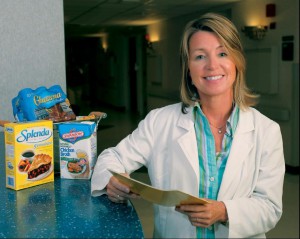Calorie Count In The Juice Aisle

Judy Heidenthal, registered dietitian
When in the juice aisle, looking over a stretch of shelves packed with colors, claims and stats, you see plenty of key words: antioxidant, all-natural, 100%. However, when it comes to satisfying your thirst, think before you drink. Beverages can be a top source of sugar and empty calories – and it’s not just soft drinks, it’s also juices and sports drinks.
While teas or juices seem like healthier options, these drinks can lead to weight gain and high blood sugar. For instance, some cranberry drinks contain 18 teaspoons of sugar in a single serving.
Judy Heidenthal, registered dietitian at Bon Secours DePaul Medical Center, recommends drinking water – but not necessarily the eight glasses traditionally cited. “Factors like age, health, activity level and climate all play a role in how much we need to drink,” said Heidenthal. “The eight glasses per day rule is not scientific. The easiest way to ensure you’re drinking enough water is to check the color of your urine. If it’s pale yellow, you’re probably drinking enough.”
The recommended daily amount of total beverage consumption varies for men and women. Experts suggest men should drink roughly 2.5 liters (10 cups) of liquids daily, while women should ingest about 2 liters (eight cups). To reach these daily goals, Heidenthal recommends drinking sugar-free beverages and water. According to American Dietetic Association (ADA), calorie-free beverages are effective at managing weight, maintaining blood glucose levels and preventing cavities.

